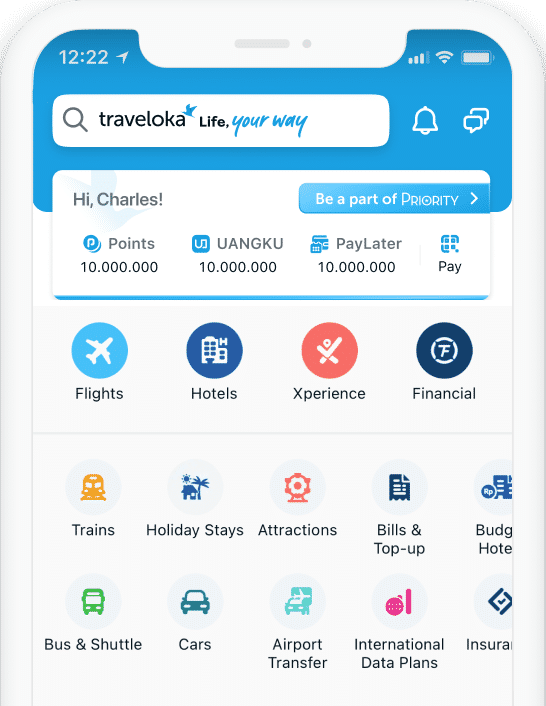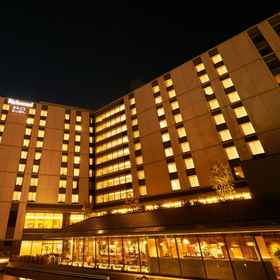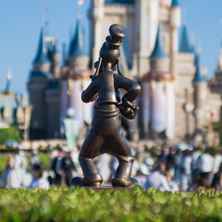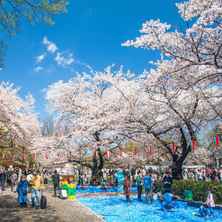
Tokyo Hotels
Destinations to Discover










Why Pay More
When You Can Pay Less?

Popular Hotels in Tokyo

Discover what you like
Stay near exciting spots
Plenty of options, whatever your occasion

More about Tokyo
Tokyo is the capital of Japan and represents the country’s deep cultural history and its people’s love for the country. A famous travel destination in Asia, it is home to numerous theme parks, gardens, temples, shrines, and museums that will educate you about Japanese culture.

Despite its bustling streets, you won’t find a speck of trash in them because people are considerate of their environment. It also has noteworthy restaurants that can introduce you to authentic Japanese cuisine. Nightlife in Tokyo isn’t to be taken lightly either since the city retains its liveliness even after the sun has set. If you’re interested in discovering the Land of the Rising Sun, Tokyo is the ideal destination to know more about Japan and its people.
How to Get There
Haneda Airport (HND) is the main airport in Tokyo. However, many international flights land at Narita International Airport (NRT) because it’s more spacious. Still, Haneda is much closer to the city proper, so it’s recommended flying here instead of Narita.
From Narita, you can take either the bus or the train to get to Tokyo. It will take around an hour or more to get to the city. The distance and cost of travelling to Tokyo are way faster and cheaper when you’re coming from Haneda. It will take you at most 45 minutes only to get to the heart of the city.
Getting Around
Subways and trains are the best methods to get around the large city. They may look complicated but that’s the only drawback for having an extensive train system that can take you anywhere you want to. If you’ll be frequenting train rides, buy prepaid cards like Pasmo or Suica for easier fare payment.
There are many buses in the region, and they have extensive routes, but they’re not ideal for tourists. You’ll be better off riding the train to get to your destination. Avoid taxis unless money is no object to you.
Top Things to Do
With more than 23 wards, each interesting in its own, there are many things you can do and see in Tokyo. Your first stop should be at the Tokyo Skytree. It’s a tourist spot in Tokyo famous for being the world’s tallest tower at 634 metres.

The major tourist spots in Tokyo are made of temples and shrines, with Sensoji in Asakusa and the Meiji Shrine in Shibuya being the most visited among all of them. For anime fans, gamers, cosplayers, and action figure collectors, the most exciting thing to do in Tokyo is to visit Akihabara town. There’s an endless array of themed cafes and shops selling collectibles here.
Meanwhile, feast your eyes and senses at the TeamLab Borderless Digital Art Museum. Interacting with the displays is one of the most out-of-this-world experiences you’ll ever have in your life.
Japan is also the home of sumo wrestling, and there’s nowhere better to learn about the sport than by watching a match in the Ryogōku Kokugikan hall. If you’re lucky, you can witness an early-morning sumo practice for free.
Another thing to do in Tokyo to learn more about Japanese tradition is to watch a Kabuki drama at the Kabuki-za. Or you can take a stroll through the Ueno Park, Shinjuku Gyoen National Garden, Imperial Palace grounds, and Yanaka Ginza Shitamachi; shop ‘til you drop at stalls in Aoyama, Harajuku, and Omotesandō; join the Shibuya Scramble at the Shibuya Crossing; take a bath at the Ōedo-Onsen Monogatari, and; partake in a tea ceremony at the Hamarikyu Onshi Teien. These are just some of the other things to do in Tokyo that you shouldn’t miss.
What to Eat
One of the best things to do in Tokyo is to eat the freshest sushi in town. Food shops in the Toyosu Fish Market serve only freshly caught fish to give you the best flavor possible. Craving a noodle dish? Nothing beats Tokyo for its ramen, tsukemen, udon, and abura soba.

If you’re up for something savory, try the monjayaki, a pan-fried batter equivalent to Osaka’s okonomiyaki. For carnivores, teppanyaki restaurants serve authentic, marbled wagyu that tastes like heaven. Meanwhile, for a unique seafood adventure, there’s the unagi and the anago which are both rare species of eels.
Nightlife
Ginza, Shibuya, Shinjuku, and Roppongi are Tokyo’s nightlife districts. These areas have several Japanese-style pubs called izakayas which are popular for serving beer with grilled meat.
Shinjuku is home to Tokyo’s red-light district. The pubs, bars, and massage parlors target Japanese patrons but there are a few that welcome foreigners. Shibuya is geared toward the younger audience and features numerous bars, dance clubs, and restaurants.
Meanwhile, Ginza targets the upscale market with its chic bars and luxurious clubs. However, the place isn’t easily accessible to foreigners who can’t speak Japanese. Roppongi features tourist-friendly clubs, pubs, and bars and is the recommended place for foreigners to visit at night.
Where to Stay

Shinjuku is the best place for backpackers. There are many mid-range Tokyo hotels here, and the area is accessible to many restaurants and shops. The Shinjuku train station is just a walk away, so it’s also easy to get to nearby tourist spots from this area.
Ginza is home to luxurious Tokyo hotels but there are also affordable accommodations in the area. It’s near bullet train stations that can get you to the airport and neighbouring regions. For young adults, Shibuya is the friendliest neighbourhood to look for hotels in Tokyo. It has the same vibrant nature of Shinjuku except for the younger crowd that lives in this district.
If you’re looking for Tokyo hotels in a peaceful neighbourhood, consider booking your stay in the Asakusa district. The area is filled with temples and shrines that will let you learn more about the Japanese culture. Travelling families may consider booking Tokyo hotels in the Odaiba district. Although it’s a bit far from the city proper, it’s nearer to theme parks and museums that kids will surely enjoy.
Travel Tips
Facts about hotel in Tokyo
Total Accommodation | 4,330 Properties |
Popular Area | Taito, Shinjuku |
Popular Hotel | The Peninsula Tokyo, Hilton Tokyo |
Popular Landmark | Haneda International Airport (HND), Tokyo Disneyland |
Frequently asked questions

Guest reviews in hotel near Tokyo
Why book Accommodation in Traveloka?



We’ve got more than just hotels
















































 Facebook
Facebook Instagram
Instagram TikTok
TikTok Youtube
Youtube